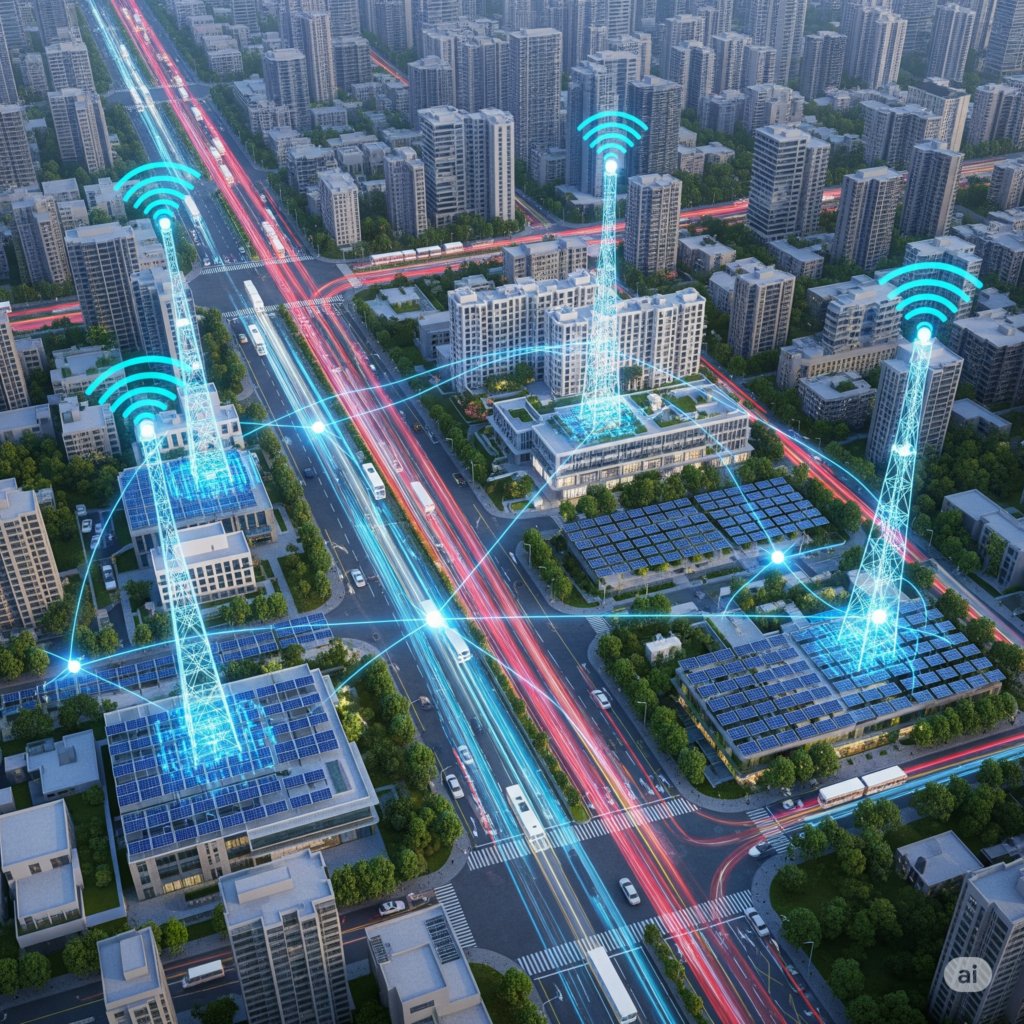📦 Quick Summary:
- AI and IoT are transforming urban infrastructure into smart, responsive ecosystems.
- Cities using these technologies see improvements in traffic, water, energy, and waste management.
- Real-time data + predictive AI = faster decisions, lower costs, and higher efficiency.
- Governments and startups are partnering for smart city innovations globally.
- Challenges include data privacy, infrastructure costs, and integration issues.
🌍 Cities That Think, React, and Evolve
As the world becomes increasingly urbanized, cities are under pressure to do more with less—less energy, less time, and less waste. Enter AI (Artificial Intelligence) and IoT (Internet of Things)—a powerful duo that is reshaping how cities operate, evolve, and serve their people.
From managing traffic in real time to automating street lighting and predicting water leaks, AI and IoT are now at the heart of modern urban infrastructure.
🤖 What Is IoT and How Does AI Fit In?
📡 IoT (Internet of Things)
IoT refers to a network of connected devices and sensors that collect and transmit data. These include:
- Smart meters
- Traffic cameras
- Pollution sensors
- Connected vehicles
- Building automation systems
🧠 AI (Artificial Intelligence)
AI analyzes the massive volumes of data collected by IoT devices and makes real-time decisions, predictions, and optimizations.
Together, they form the nervous system and brain of a modern city.
🛣️ Where AI and IoT Are Powering Urban Innovation

🚦 1. Smart Traffic Management
IoT sensors track traffic volume, vehicle speeds, and congestion.
AI then adjusts signal timings or suggests alternate routes.
✅ Result: Reduced congestion and travel time.
💡 2. Smart Street Lighting
IoT-enabled lights sense movement or ambient light.
AI turns them on/off and adjusts brightness.
✅ Result: Energy savings and lower maintenance costs.
🚰 3. Intelligent Water Management
Sensors monitor pressure and leaks in water pipelines.
AI predicts failures or usage spikes.
✅ Result: Prevention of water loss and early problem detection.
🔌 4. Power Grid Optimization
Smart meters and transformers share data with AI systems.
AI balances supply and demand, and predicts outages.
✅ Result: Reduced blackouts and improved energy efficiency.
🗑️ 5. Waste Collection & Urban Cleanliness
IoT-enabled bins send fill-level data.
AI optimizes waste truck routes.
✅ Result: Cleaner cities and cost-effective waste handling.
🏙️ Real-World Examples
🇸🇬 Singapore
Uses AI + IoT in transportation, water recycling, and environmental monitoring—considered one of the world’s smartest cities.
🇮🇳 India
Under the Smart Cities Mission, cities like Bhopal, Pune, and Surat use integrated command centers powered by AI-IoT to manage urban services.
🇳🇱 Amsterdam
AI analyzes data from IoT-based bike sensors, air monitors, and flood systems for better city planning.
⚠️ Challenges in Building Smart Infrastructure
- Data privacy: How secure is the collected data?
- High setup costs: Initial investment can be steep.
- Legacy systems: Integrating AI-IoT with old infrastructure is tricky.
- Digital divide: Smaller towns may be left behind.
Despite these hurdles, the long-term benefits far outweigh the costs, especially in high-density urban environments.
🔮 The Future: Hyperconnected, Self-Healing Cities
Imagine a city where:
- Potholes report themselves
- Power grids predict demand before a heatwave
- Public buses reroute based on crowding patterns in real time
This is no longer science fiction. As 5G, edge computing, and machine learning evolve, AI and IoT will make cities more adaptive, efficient, and sustainable.
🔚 Conclusion: The Pulse of Smart Cities
AI and IoT are not just buzzwords—they are the core engines of tomorrow’s urban growth. By bringing real-time awareness and intelligent automation into everyday systems, they enable cities to think like humans and react like machines.
As more nations embrace smart infrastructure, these twin technologies will redefine urban living—making it faster, cleaner, safer, and smarter.









+ There are no comments
Add yours